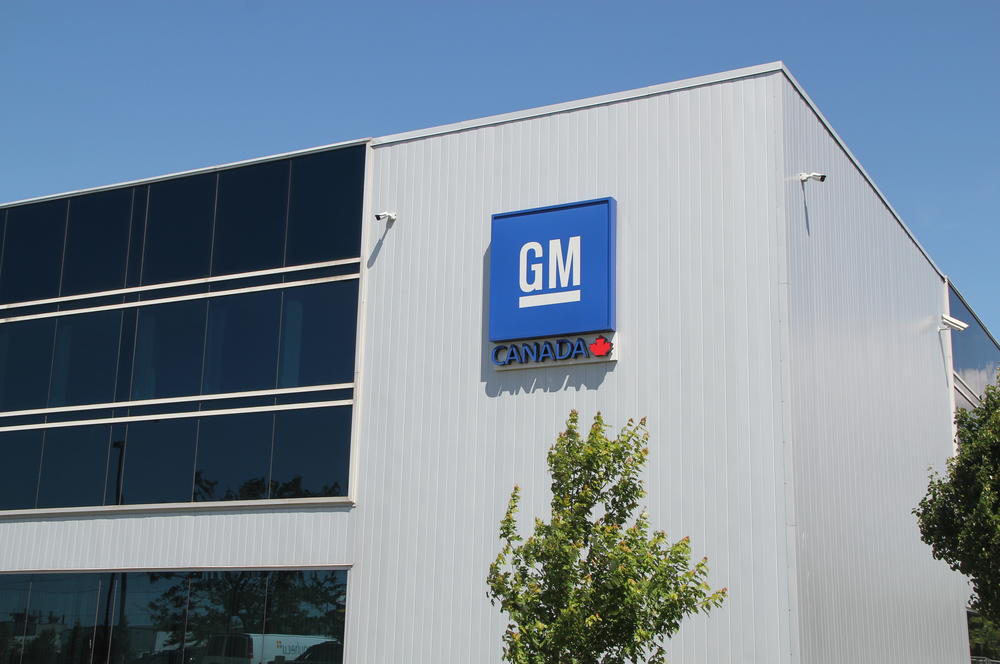Section Branding
Header Content
After years of decline, the auto industry in Canada is making a comeback
Primary Content
When most people think of Canada, they rarely think of cars. But the country, known for hockey, maple syrup and endless wilderness, is one of the largest car producers in North America. And with the growing importance of electric vehicles, Canada hopes to breathe new life into its automotive industry and maintain a more than 100-year-old tradition.
Canada's automotive industry is primarily located in Ontario and Quebec, with Windsor, Ontario, claiming the title of Canada's automotive capital.
"We've been the auto capital of Canada since about 1904, when the first auto plant opened in Canada," said Windsor Mayor Drew Dilkins.
Windsor, just across the river from Detroit, has benefited from its proximity to the United States and the three major carmakers headquartered there.
Stellantis, formerly Fiat Chrysler, and South Korean battery maker LG Energy Solutions (LGES) announced last year that they will invest more than 5 billion Canadian dollars ($3.5 billion) in building a new large-scale battery manufacturing plant in Windsor. The plant is expected to be operational by 2024 and will create an estimated 2,500 jobs.
"It's a massive, game-changing investment, and I'm not even sure these two words are big enough to describe how important it is for our community," Dilkins says. "This will have a generational impact. [Companies] will look at the new world of automotive and will start looking at Windsor Essex as a place to do business.
Investment by Stellantis and LGES is part of a larger trend that has seen more than CA$17 billion in announced investment in Ontario's automotive sector since the beginning of 2021.
"Ontario has had the greatest new investment in vehicle production in its history over the past two years," says Flavio Volpe, president of the Canadian Automobile Parts Manufacturers' Association.
Most of this investment, worth nearly CA$13 billion, is in electric and battery production. And by passing the Inflation Reduction Act, U.S. lawmakers have given Canada a further boost to its EV ambitions.
"This is good news for Canadians, for our green economy, and for our growing EV manufacturing sector," Canadian Prime Minister Justin Trudeau said in a tweet shortly after President Biden signed the law.
The law includes tax credits for EV buyers, but only if the car is largely made and assembled in North America, and its battery uses locally mined components. According to GM Canada's David Paterson, this could give Canada an advantage over the U.S. and Mexico.
"What goes into our [sic] batteries are cathode active materials, which are mainly made of nickel and other critical minerals that we happen to have in abundance here in Canada," he says.
"As we see less demand for gasoline, we see more demand for minerals, and Canada is an economy built on natural resources."
In an effort to encourage the shift in the auto industry toward battery-powered EVs, Canada's federal government along with Ontario's provincial government have been investing billions of dollars.
"Our incentive is that you have a job because we invest about $2.5 billion in taxpayer money in these [car companies," says Vic Fedeli, Ontario's Minister of Economic Development, Job Creation and Trade.
The recent investment streak is a welcome sign for an industry that has gone through many ups and downs. Increased automation and competition from lower-wage regions have led to plant closures and job losses over the past two decades.
"We have been coming from a whole generation since about 2000, watching this critical sector decline. We have seen disinvestment in the sector, we have seen job losses in the sector, we have seen plants closed and communities are basically disappearing," says Angelo DiCaro, research director for Unifor, a union representing about 230,000 Canadian auto workers.
The North American Free Trade Agreement, or NAFTA for short, contributed to this downturn as car companies moved their assembly lines to places like Mexico or the U.S. Southeast to cut costs. The USMAC, which replaced NAFTA in 2020, has somewhat leveled the playing field by boosting regional content requirements and instituting a minimum wage of at least $16 an hour.
DiCaro says that despite the uncertainty surrounding certain jobs that could be lost in this transition to electric vehicles, Canada's auto workers have a sense of optimism and hope.
According to government data, the auto sector plays a key role in Canada's economy, contributing CA$16 billion to its gross domestic product (GDP). With nearly 500,000 direct or indirect jobs, automotive is one of the country's largest manufacturing sectors and one of its largest export industries.
Volkswagen and Tesla are two companies that have publicly stated they are actively looking at Canada as a potential site for a new battery and / or assembly plant. They would join Ford, General Motors, Honda, Stellantis and Toyota, which already have production facilities in Ontario.
"The success of the [Ontario] government and the federal government [sic] will not be defined by what we have landed at the moment. It will be whether we can lend a sixth automaker or a seventh," Flavio Volpe says. "It will mean that our vision was worthy of the rhetoric and convince the best automakers in the world that the future runs through Ontario."
Copyright 2023 NPR. To see more, visit https://www.npr.org.


